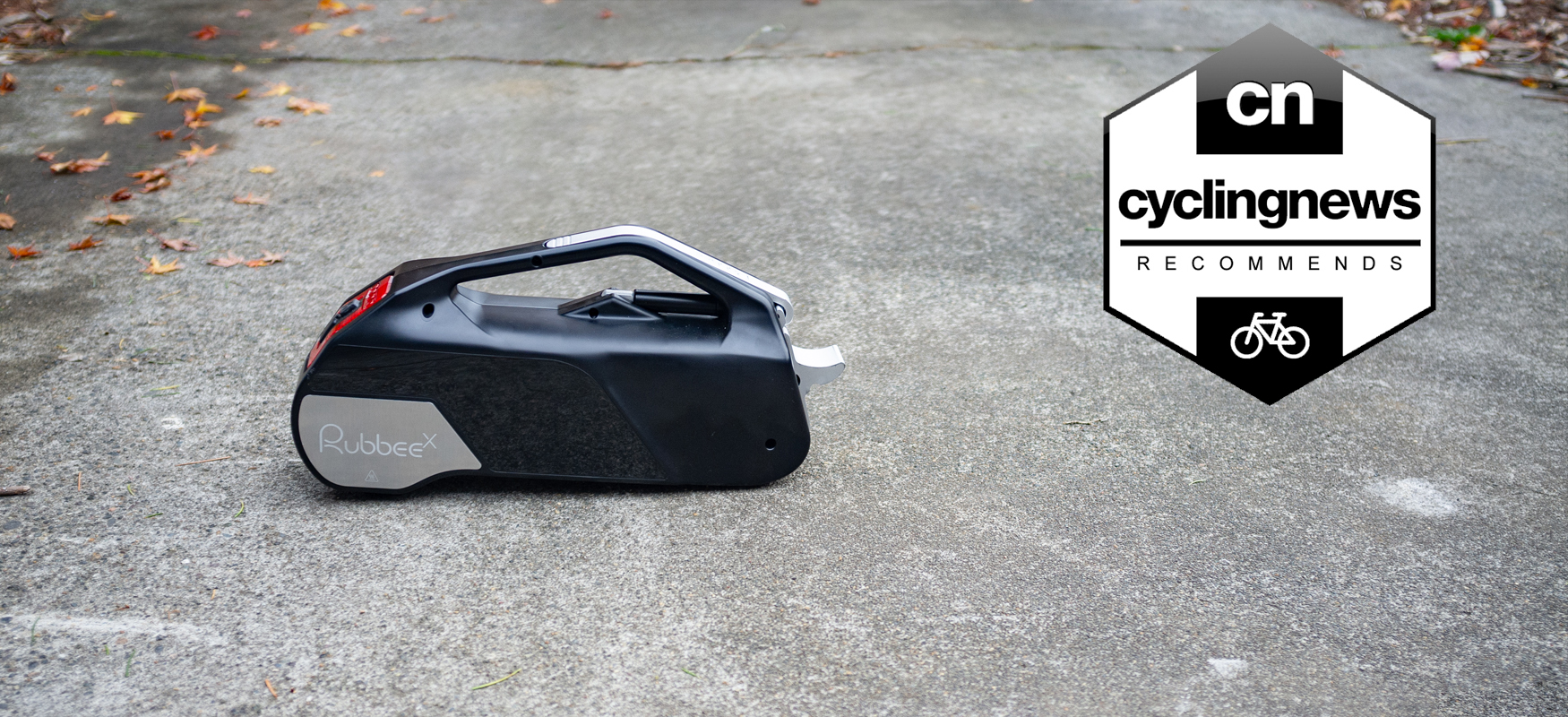Cyclingnews Verdict
It actually works and it works well with almost no setup. Four Allen head bolts and two zip ties, and you have an e-bike. The only thing you need to consider is if you have enough exposed seat post.
Pros
- +
Fast setup
- +
Lightweight
- +
Regenerative braking
- +
Easy removal
Cons
- -
Makes noise against the tyre
You can trust Cyclingnews
There is a lot of interest in converting existing bikes to electric bikes, and for many people, there's sense in it. They've already got a bike they like and they just want to make things a bit easier from time to time. The problem is that the reality of actually doing it is more complicated than you might think. The Rubbee X presents a solution.
Installation of the Rubbee kit takes maybe 10 minutes. It's such a simple concept that we featured it in our list of the best electric bike conversion kits. We've spent some time with it too and now we are ready to give all the details about what makes it good and what the drawbacks are. Keep reading if you think the idea of an incredibly simple way to convert your bike to an electric bike sounds too good to be true.
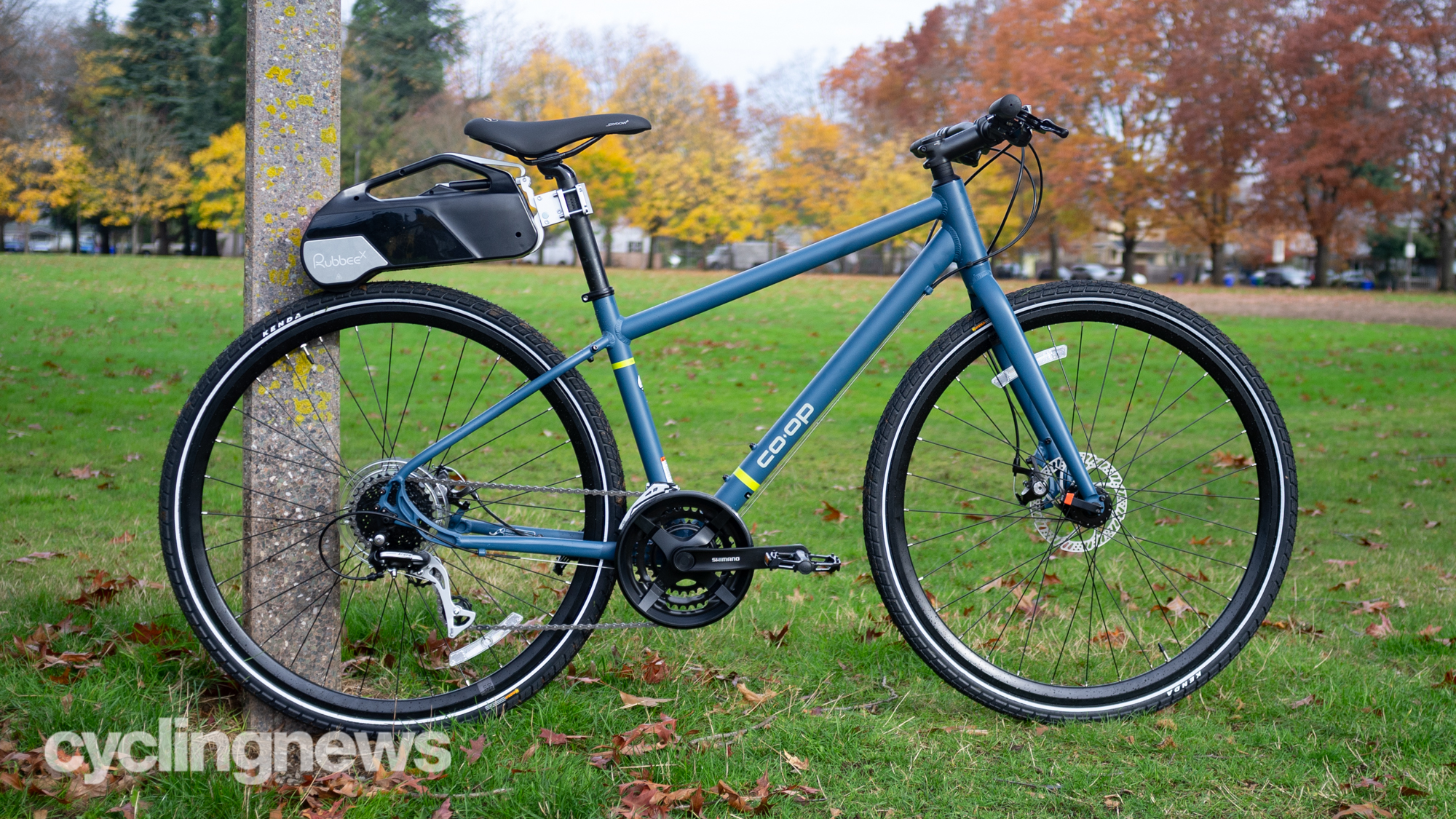
Design and aesthetics
The first piece of the three-part Rubbee X system is the bracket, which is an impressive piece of aluminium with two main parts. Facing toward the front of the bike is a plate with four holes in it and a Rubbee logo. The back half sandwiches the seat post and the two connect with four Allen head bolts. The rear half is a "T" shape and inside is where the motor unit connects.
The second major piece of the system is the motor unit, on which is a solid piece of aluminium that gets inserted into the bracket and rests against the lower part. There's a spring-loaded release for removing the motor without unmounting it. It's hard to overstate how elegant this whole system is. It all relies on solid pieces of machined aluminium and gravity.
When you are ready to use the motor, press the button at the top of the unit and lift it a bit. The catch releases and allows a hydraulic actuator, and gravity, to push the whole unit against the rear wheel. The actual interface is a rubberised wheel with a concave cavity in the middle.
The motor is mostly black plastic with aluminium contrasting elements. There is also a red light at the back and the power button, as well as the charge port which sits in the centre of that. Both sides have big spots of mirrored black plastic and aluminium panels with the Rubbee X logo. All the seams are exact and everything feels high quality.
The last piece of the system is a wireless cadence sensor. It uses cable ties to connect to the left crank arm and broadcasts the movement of the pedals without any wires. As far as cadence sensors go, it's on the larger side of things but the mounting can move up or down the crank arm for better clearance.
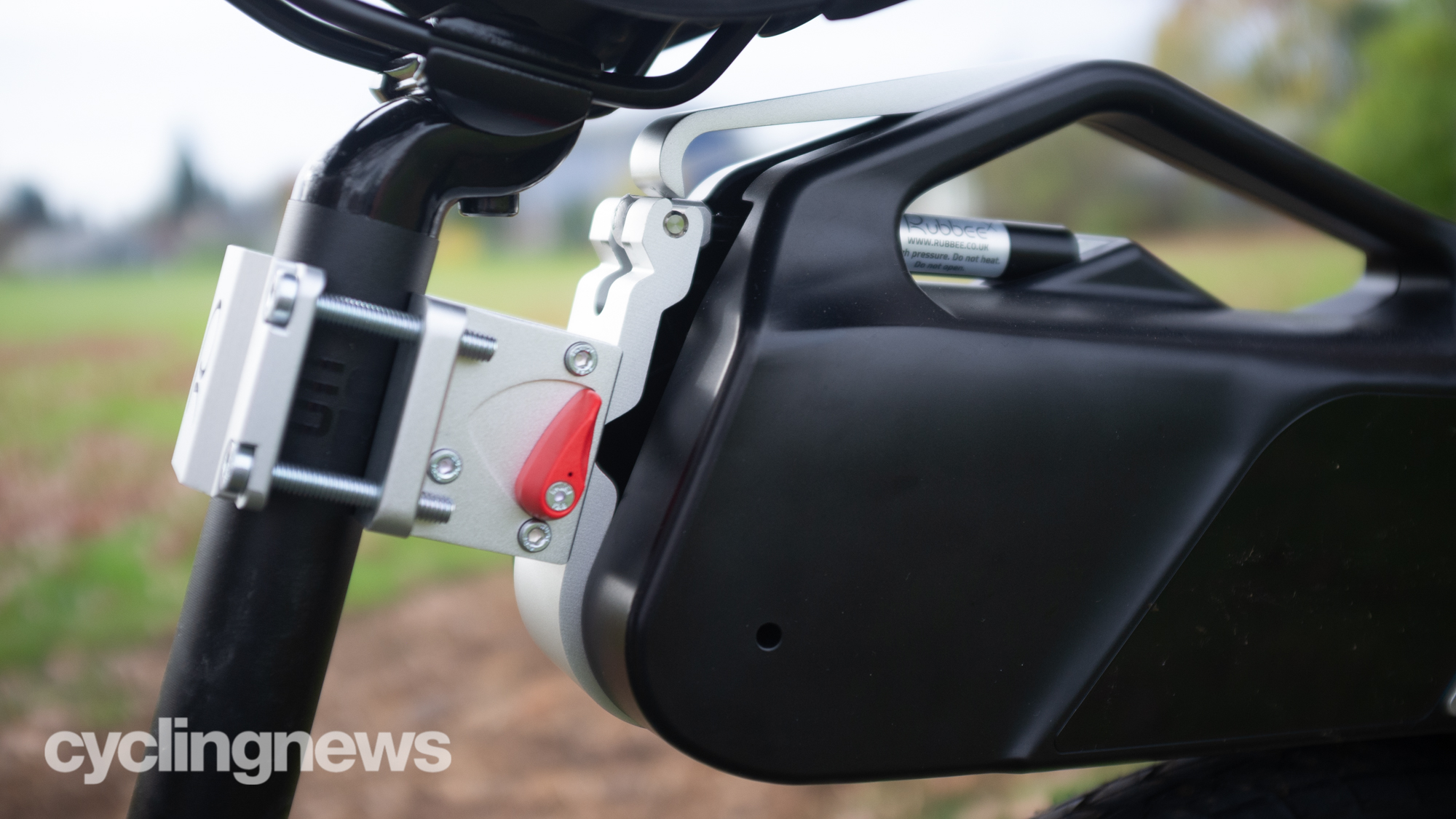
Installation
Attaching the bracket to the seat post is the first step. This is also the place where you may run into compatibility issues. The interface to the tyre could, worst case scenario, mean changing tyres. The bracket though might be a non-starter, as the motor needs to angle down and needs room for that.
As long as you have enough space, all you have to do is evenly tighten the four Allen bolts. Move around from one to the other until the bracket is nice and snug and doesn't easily move. Once that's done, just click the motor into the bracket.
The only other install step is installing the cadence sensor. Sit it against the inside of the left crank arm and rotate the arm to make sure there's clearance against the frame. As long as you don't have an issue, use the supplied cable ties and snug it up. It doesn't need to sit perfectly flat, so don't worry if there is a curve to the crank arm.
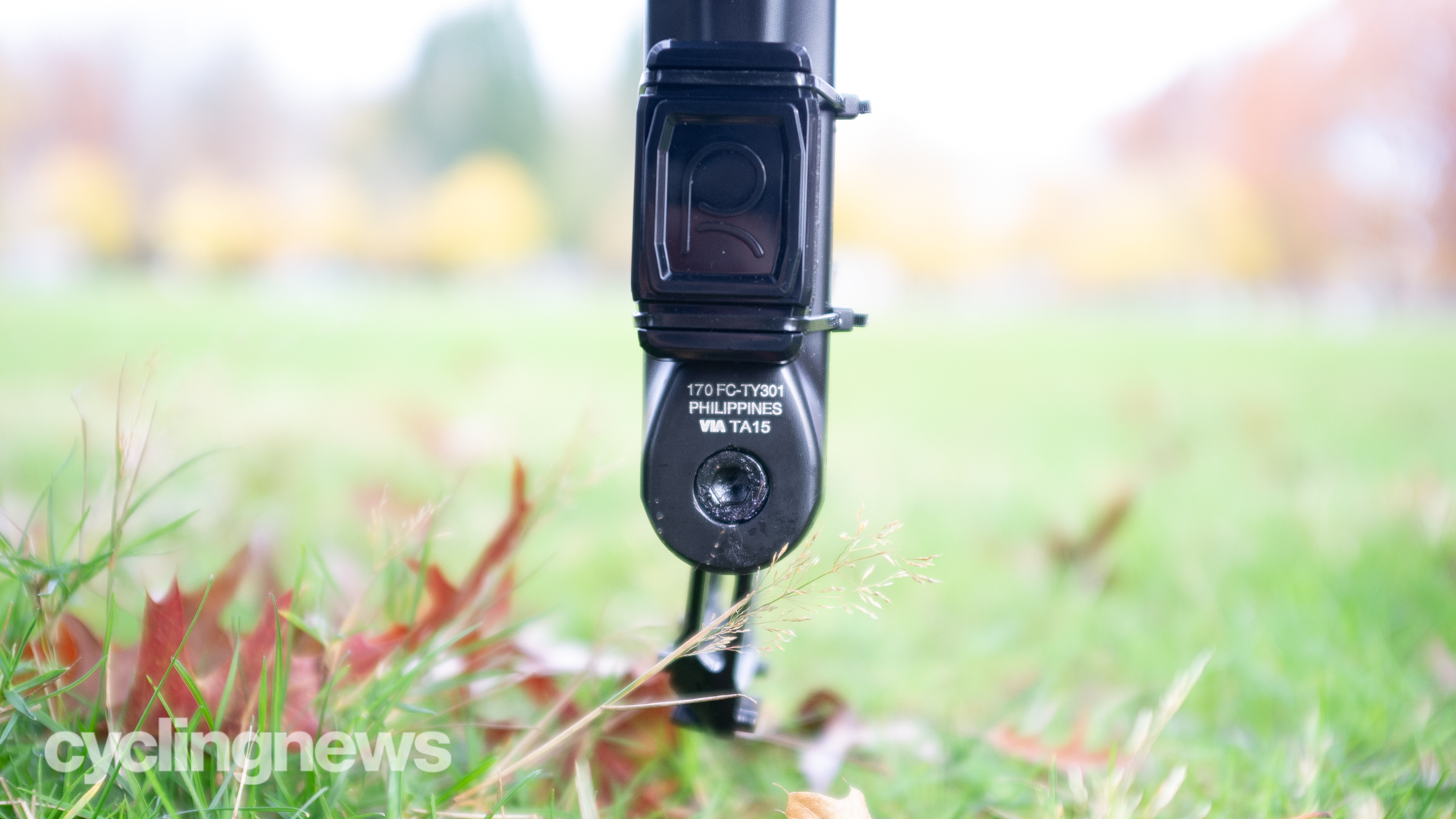
Performance
Depending on the pieces you ordered, you may have to install additional batteries after opening the box. My review unit has three batteries in total, which means 350 watts of power, a range of 48km / 30 miles, a top speed of 32 km/h / 20 mph, and a three-hour charge time, and 4.0kg / 8.8lbs of extra weight on the bike.
In the US that means it's a Class 1 electric bike. If your needs, and/or location, require less speed and power, then going to the two-battery system brings it down to 250 watts and a max speed of 25 km/h.
- E-Bike classes: What do they mean?
Given that I had three batteries, I did need to install them. It's a simple system that requires removing four bolts. Once the base plate is open, just slot the batteries in and close it back up. Including the battery installation, the whole setup took me maybe 15 minutes.
From there I was ready to ride, although I did need to allow time for charging. With a charged battery, just push the power button, engage the motor on the wheel, and head out the door. There is a smartphone app that allows you to change the assist mode. None of them feel drastically different though and I didn't touch the app at first.
Riding the bike around with lightly treaded commuter tyres meant some noise. There's a bit of the typical electric motor noise but there's also a good amount of noise from the tyre against the motor. It gets worse when it's wet.
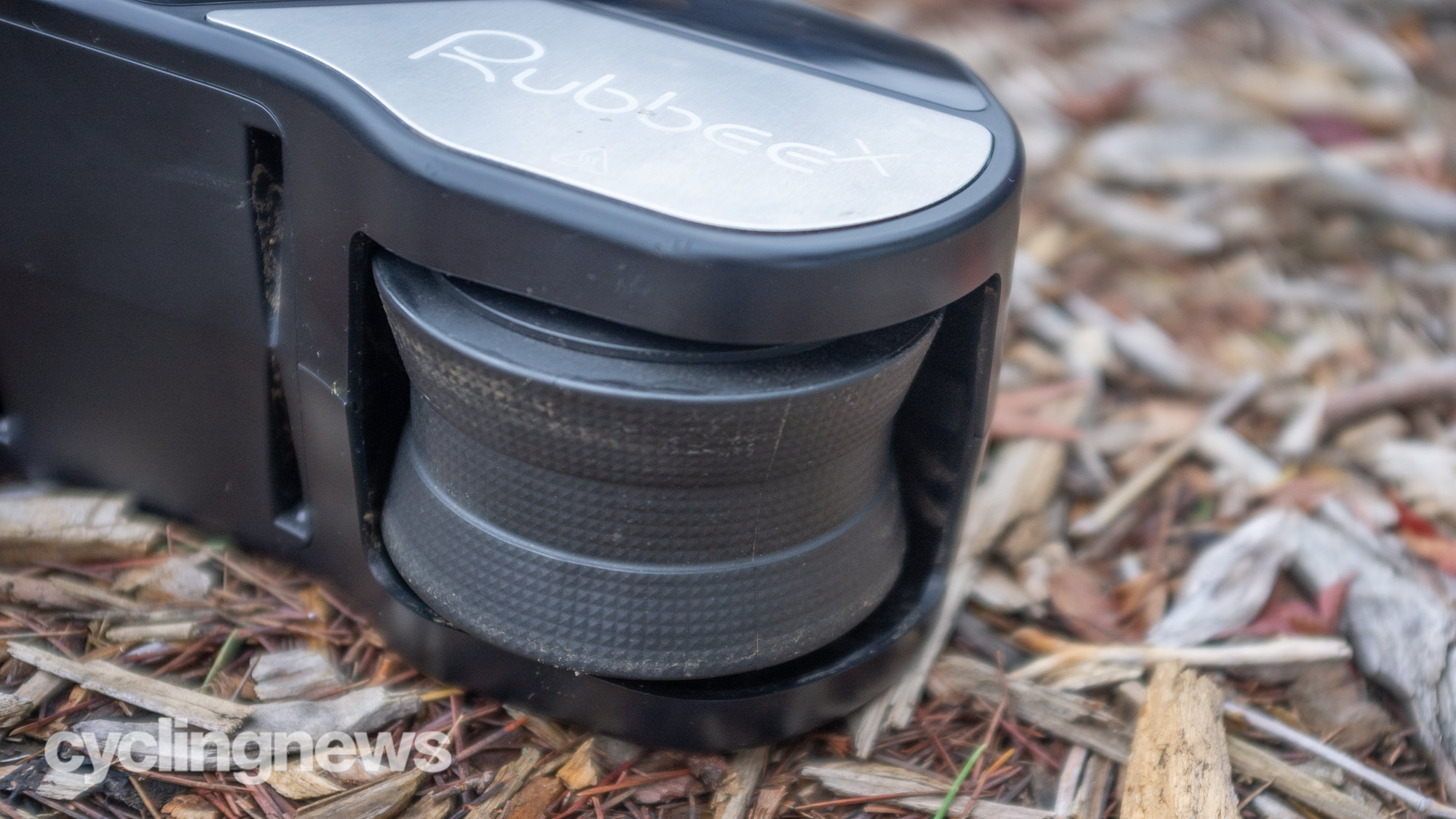
Aside from the noise issue it's a lot of fun and works as well as other after-market electric bike conversions, however the biggest thing to remember about the system is that it is cadence based, rather than torque based. Multiple times when riding it I had to remind myself of that. Heading up a hill, or through a muddy field, I would allow my cadence to drop and it would feel like the motor wasn't helping much. Shift gears on the bike and get to a place where you can spin easily and the motor will pick right up. If you don't have the gearing to allow that on a hill, you will still get help, but not as much as you might like.
One of the biggest questions about the Rubbee X system is how well it handles bad weather and road grime. I used it in the rain and it worked fine, but it gets loud. You can hear it making noise against the tyre. I also took it through a muddy park to take the pictures and used that to check how it handled grime. It's not a cyclocross machine but it did handle the mud and it built up on the edge of the plastic at the front edge of the interface wheel.
I also managed to drop the bike in the park - consider it an unexpected test of build quality that it passed with flying colours. The mount moved to the side a bit and there's a small scratch, but otherwise, everything continued to work without issue.
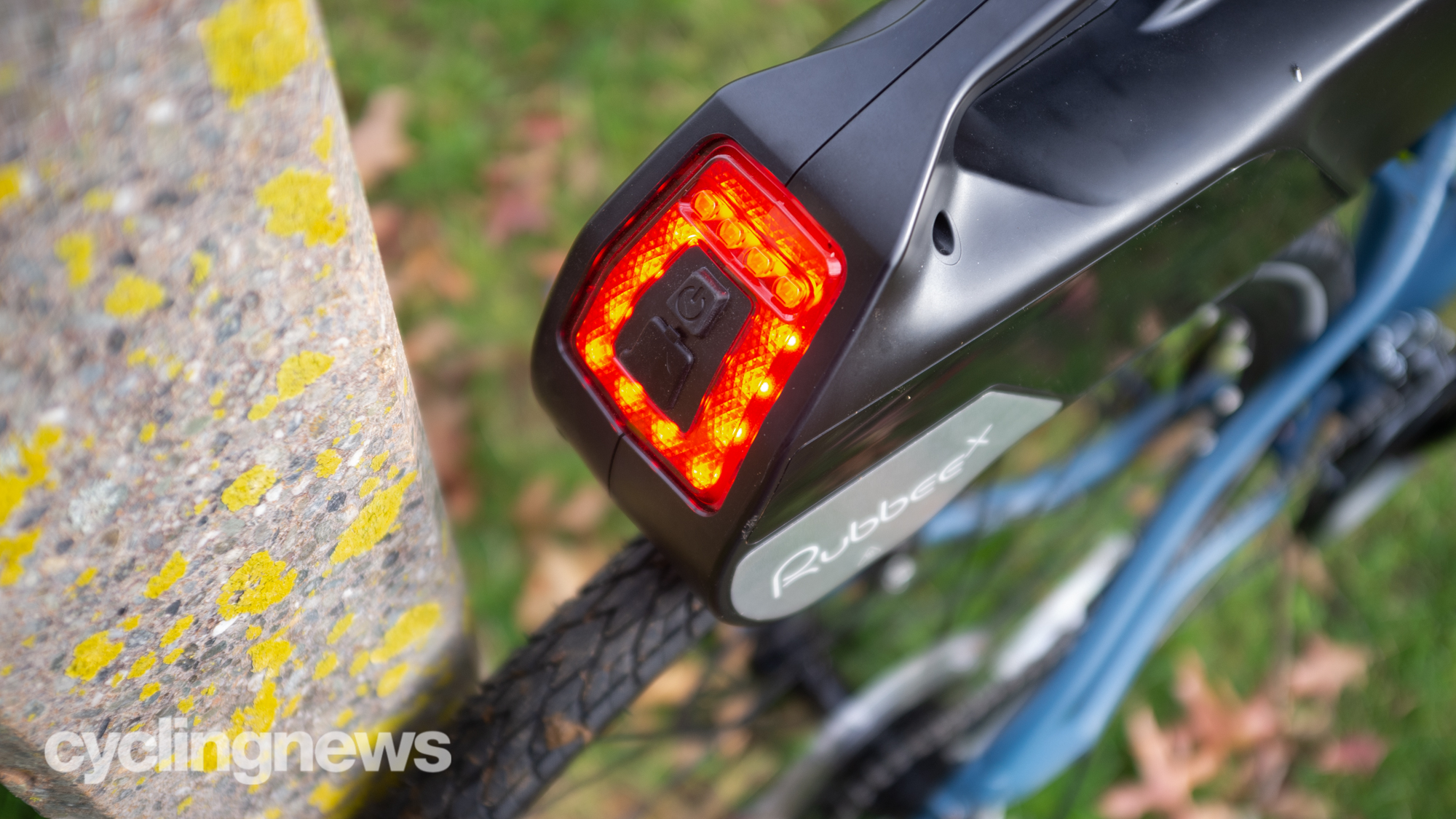
Verdict
The Rubbee X system is an elegant design that is unbelievably easy to fit to almost any bike you might have. The only question you might want to ask before pressing 'buy' is if it makes more sense to purchase an inexpensive electric bike. Rubbee X is cheaper than most though, and the ability to remove the expensive, and heavy, part of your bike could be a big benefit to those who want to flit between electric assist and pedal power alone, or perhaps those who share a bike with a family member.
There's a bit of noise from the tyre interface and it's cadence-based. Those are the drawbacks and they are pretty small compared to what you get. In fact, the cadence-based design is less of a drawback and more of a feature that needs remembering.
Tech specs: Rubbee X e-bike conversion kit
| Header Cell - Column 0 | Base Model | Two Batteries | Three Batteries |
|---|---|---|---|
| Speed | 25 kmh / 16 mph | 25 kmh / 16 mph | 32 km/h / 20 mph |
| Power | 250w | 250w | 350w |
| Range | 16 km / 10 mi | 32 km / 20 mi | 48 km / 30 mi |
| Charge | 1h | 2h | 3h |
| Weight | 2.8 kg / 6.1 lbs | 3.4 kg / 7.5 lbs | 4.0 kg / 8.8 lbs |
Josh hails from the Pacific Northwest of the United States but would prefer riding through the desert than the rain. He will happily talk for hours about the minutiae of cycling tech but also has an understanding that most people just want things to work. He is a road cyclist at heart and doesn't care much if those roads are paved, dirt, or digital. Although he rarely races, if you ask him to ride from sunrise to sunset the answer will be yes. Height: 5'9" Weight: 140 lb. Rides: Salsa Warbird, Cannondale CAAD9, Enve Melee, Look 795 Blade RS, Priority Continuum Onyx
